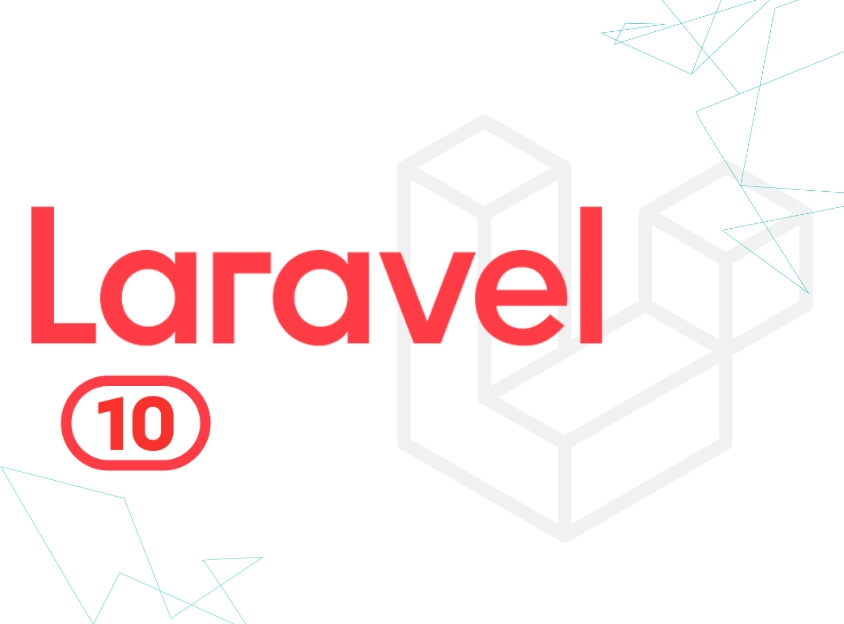
The main purpose of using dependent dropdowns is to create a dynamic user interface where the available options in a dropdown are updated based on the selection made in a preceding dropdown field. This allows users to select relevant data based on their previous selection, improving the user experience and ensuring data integrity.
Step 1: Install Laravel
This step is not required; however, if you have not created the laravel app, then you may go ahead and execute the below command:
composer create-project laravel/laravel example-app
Step 2: Create Migration for Table
In this step, we will create migration for countries, states and cities table. So let's run below command to create tables.
php artisan make:migration create_countries_states_cities_tables
Next, simple update below code to migration file.
database/migrations/create_countries_states_cities_tables.php
<?php
use Illuminate\Database\Migrations\Migration;
use Illuminate\Database\Schema\Blueprint;
use Illuminate\Support\Facades\Schema;
return new class extends Migration
{
/**
* Run the migrations.
*
* @return void
*/
public function up(): void
{
Schema::create('countries', function (Blueprint $table) {
$table->id();
$table->string('name');
$table->timestamps();
});
Schema::create('states', function (Blueprint $table) {
$table->id();
$table->string('name');
$table->integer('country_id');
$table->timestamps();
});
Schema::create('cities', function (Blueprint $table) {
$table->id();
$table->string('name');
$table->integer('state_id');
$table->timestamps();
});
}
/**
* Reverse the migrations.
*
* @return void
*/
public function down(): void
{
Schema::dropIfExists('countries');
Schema::dropIfExists('states');
Schema::dropIfExists('cities');
}
};
Then run migration using below command:
php artisan migrate
Step 3: Create Models
In this step, we will create three models for tables Country.php, State.php and City.php model file.
so, let's run below command to create file and update following code:
php artisan make:model Country
php artisan make:model State
php artisan make:model City
app/Models/Country.php
<?php
namespace App\Models;
use Illuminate\Database\Eloquent\Factories\HasFactory;
use Illuminate\Database\Eloquent\Model;
class Country extends Model
{
use HasFactory;
/**
* Write code on Method
*
* @return response()
*/
protected $fillable = [
'name'
];
}
app/Models/State.php
<?php
namespace App\Models;
use Illuminate\Database\Eloquent\Factories\HasFactory;
use Illuminate\Database\Eloquent\Model;
class State extends Model
{
use HasFactory;
/**
* Write code on Method
*
* @return response()
*/
protected $fillable = [
'name', 'country_id'
];
}
app/Models/City.php
<?php
namespace App\Models;
use Illuminate\Database\Eloquent\Factories\HasFactory;
use Illuminate\Database\Eloquent\Model;
class City extends Model
{
use HasFactory;
/**
* Write code on Method
*
* @return response()
*/
protected $fillable = [
'name', 'state_id'
];
}
Step 4: Create Route
routes/web.php
<?php
use Illuminate\Support\Facades\Route;
use App\Http\Controllers\DropdownController;
/*
|--------------------------------------------------------------------------
| Web Routes
|--------------------------------------------------------------------------
|
| Here is where you can register web routes for your application. These
| routes are loaded by the RouteServiceProvider within a group which
| contains the "web" middleware group. Now create something great!
|
*/
Route::get('dropdown', [DropdownController::class, 'index']);
Route::post('api/fetch-states', [DropdownController::class, 'fetchState']);
Route::post('api/fetch-cities', [DropdownController::class, 'fetchCity']);
Step 5: Create Controller
Now, we have to create new controller as DropdownController with index(), fetchState() and fetchCity() methods. so let's update follow code:
app/Http/Controllers/DropdownController.php
<?php
namespace App\Http\Controllers;
use Illuminate\Http\Request;
use App\Models\Country;
use App\Models\State;
use App\Models\City;
use Illuminate\View\View;
use Illuminate\Http\JsonResponse;
class DropdownController extends Controller
{
/**
* Write code on Method
*
* @return response()
*/
public function index(): View
{
$data['countries'] = Country::get(["name", "id"]);
return view('dropdown', $data);
}
/**
* Write code on Method
*
* @return response()
*/
public function fetchState(Request $request): JsonResponse
{
$data['states'] = State::where("country_id", $request->country_id)
->get(["name", "id"]);
return response()->json($data);
}
/**
* Write code on Method
*
* @return response()
*/
public function fetchCity(Request $request): JsonResponse
{
$data['cities'] = City::where("state_id", $request->state_id)
->get(["name", "id"]);
return response()->json($data);
}
}
Step 6: Create View File
resources/views/dropdown.blade.php
<!DOCTYPE html>
<html lang="{{ str_replace('_', '-', app()->getLocale()) }}">
<head>
<meta charset="utf-8">
<meta name="csrf-token" content="content">
<meta name="csrf-token" content="{{ csrf_token() }}">
<meta name="viewport" content="width=device-width, initial-scale=1">
<title>Laravel AJAX Dependent Country State City Dropdown Example - webthestuff.com</title>
<!-- CSS only -->
<link href="https://cdn.jsdelivr.net/npm/bootstrap@5.0.0-beta1/dist/css/bootstrap.min.css" rel="stylesheet">
</head>
<body>
<div class="container mt-4" >
<div class="row justify-content-center">
<div class="col-md-8">
<div class="alert alert-primary mb-4 text-center">
<h4 >Laravel AJAX Dependent Country State City Dropdown Example webthestuff.com</h4>
</div>
<form>
<div class="form-group mb-3">
<select id="country-dropdown" class="form-control">
<option value="">-- Select Country --</option>
@foreach ($countries as $data)
<option value="{{$data->id}}">
{{$data->name}}
</option>
@endforeach
</select>
</div>
<div class="form-group mb-3">
<select id="state-dropdown" class="form-control">
</select>
</div>
<div class="form-group">
<select id="city-dropdown" class="form-control">
</select>
</div>
</form>
</div>
</div>
</div>
<script src="https://ajax.googleapis.com/ajax/libs/jquery/3.5.1/jquery.min.js"></script>
<script>
$(document).ready(function () {
/*------------------------------------------
--------------------------------------------
Country Dropdown Change Event
--------------------------------------------
--------------------------------------------*/
$('#country-dropdown').on('change', function () {
var idCountry = this.value;
$("#state-dropdown").html('');
$.ajax({
url: "{{url('api/fetch-states')}}",
type: "POST",
data: {
country_id: idCountry,
_token: '{{csrf_token()}}'
},
dataType: 'json',
success: function (result) {
$('#state-dropdown').html('<option value="">-- Select State --</option>');
$.each(result.states, function (key, value) {
$("#state-dropdown").append('<option value="' + value
.id + '">' + value.name + '</option>');
});
$('#city-dropdown').html('<option value="">-- Select City --</option>');
}
});
});
/*------------------------------------------
--------------------------------------------
State Dropdown Change Event
--------------------------------------------
--------------------------------------------*/
$('#state-dropdown').on('change', function () {
var idState = this.value;
$("#city-dropdown").html('');
$.ajax({
url: "{{url('api/fetch-cities')}}",
type: "POST",
data: {
state_id: idState,
_token: '{{csrf_token()}}'
},
dataType: 'json',
success: function (res) {
$('#city-dropdown').html('<option value="">-- Select City --</option>');
$.each(res.cities, function (key, value) {
$("#city-dropdown").append('<option value="' + value
.id + '">' + value.name + '</option>');
});
}
});
});
});
</script>
</body>
</html>
Step 7: Create Seeder
In this step, we will create "CountrySateCitySeeder" file to create dummy records. so let's create seeder and run it.
Create Seeder file using below command:
php artisan make:seeder CountrySateCitySeeder
database/seeders/CountrySateCitySeeder.php
<?php
namespace Database\Seeders;
use Illuminate\Database\Console\Seeds\WithoutModelEvents;
use Illuminate\Database\Seeder;
use App\Models\Country;
use App\Models\State;
use App\Models\City;
class CountrySateCitySeeder extends Seeder
{
/**
* Run the database seeds.
*
* @return void
*/
public function run(): void
{
/*------------------------------------------
--------------------------------------------
US Country Data
--------------------------------------------
--------------------------------------------*/
$country = Country::create(['name' => 'United State']);
$state = State::create(['country_id' => $country->id, 'name' => 'Florida']);
City::create(['state_id' => $state->id, 'name' => 'Miami']);
City::create(['state_id' => $state->id, 'name' => 'Tampa']);
/*------------------------------------------
--------------------------------------------
India Country Data
--------------------------------------------
--------------------------------------------*/
$country = Country::create(['name' => 'India']);
$state = State::create(['country_id' => $country->id, 'name' => 'Gujarat']);
City::create(['state_id' => $state->id, 'name' => 'Rajkot']);
City::create(['state_id' => $state->id, 'name' => 'Surat']);
}
}
Next, run seeder with below command:
php artisan db:seed --class=CountrySateCitySeeder
Run Laravel App:
php artisan serve
Now, Go to web browser, type URL and view output:
http://localhost:8000/dropdown



